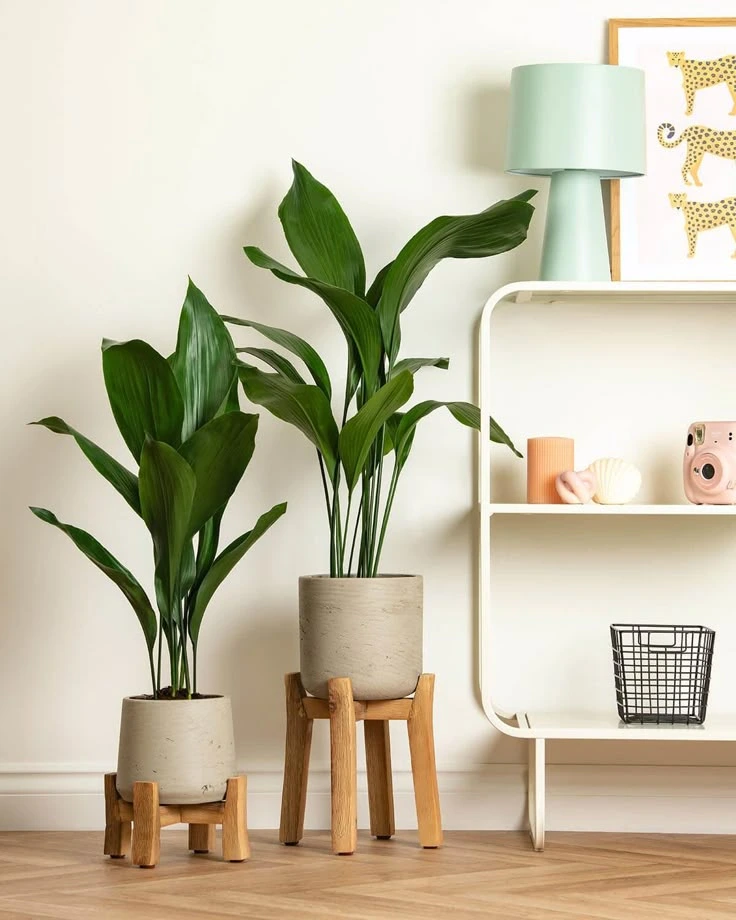Table of Contents
Introduction

Including indoor plants in your living space not only improves appearance but also helps to clean the air and generates a relaxing effect. Here are some of the best plants to keep in your living room.
1. Snake Plant (Sansevieria)
One of the most resilient houseplants, the snake plant thrives in low light and requires minimal watering. It is known for purifying the air by removing toxins like formaldehyde and benzene.
- Low-maintenance and air-purifying
- Thrives in low light and requires minimal watering
A graceful and air-purifying plant, the Areca Palm adds a tropical touch to your living space. It thrives in bright, indirect light and requires regular watering to maintain its lush green fronds.
2. Fiddle Leaf Fig (Ficus lyrata)
A popular choice for modern interiors, the fiddle leaf fig has large, glossy leaves that add a bold statement to any room. It thrives in bright, indirect light and requires regular watering.
- Large, glossy leaves add elegance
- Needs bright, indirect light and occasional watering
3. Peace Lily (Spathiphyllum)
Known for its beautiful white blooms, the peace lily is an elegant choice that also acts as an air purifier. It thrives in low to medium light and needs consistent moisture.
- Beautiful white flowers and air-purifying properties
- Prefers indirect light and moderate watering
4. Pothos (Epipremnum aureum)
Pothos is an excellent low-maintenance option with trailing vines that add a touch of elegance. It grows well in various lighting conditions and requires occasional watering.
- Trailing vines perfect for shelves and hanging baskets
- Grows well in low light and requires occasional watering
5. Rubber Plant (Ficus elastica)
This hardy plant has thick, dark green leaves that give a sophisticated look to your space. It requires bright, indirect light and occasional watering.
- Bold, glossy leaves enhance décor
- Needs bright, indirect light and moderate watering
6. Areca Palm
- Adds a tropical touch and improves air quality
- Requires bright, indirect light and regular watering
7. ZZ Plant (Zamioculcas zamiifolia)
Ideal for beginners, the ZZ plant is drought-tolerant and thrives in low-light conditions. Its glossy, deep green leaves make it a stylish addition to any living room.
- Extremely low-maintenance and drought-tolerant
- Survives in low light and needs infrequent watering
8. Spider Plant (Chlorophytum comosum)
The spider plant is known for its arching leaves and air-purifying qualities. It grows well in indirect light and needs moderate watering.
- Easy to grow and produces cascading green-and-white leaves
- Thrives in indirect sunlight with occasional watering
9. Aloe Vera
Beyond its decorative appeal, aloe vera has medicinal properties and can be used for skincare. It needs bright light and infrequent watering.
- Aesthetic and medicinal benefits
- Prefers bright light and minimal watering
10. Monstera Deliciosa
The monstera, also known as the Swiss cheese plant, features large, perforated leaves that make a dramatic impact. It enjoys bright, indirect light and regular watering.
- Large, split leaves create a dramatic effect
- Needs moderate to bright light and regular watering
Tips for Keeping Living Room Plants Healthy
- Light: Place plants according to their light requirements—bright, indirect, or low light.
- Watering: Avoid overwatering; check soil moisture before watering.
- Humidity: Some plants thrive in humid conditions, so consider misting or using a humidifier.
- Cleaning: Wipe leaves occasionally to remove dust and help with photosynthesis.
- Repotting: Repot plants when they outgrow their containers for healthy root growth.

Conclusion
Living room plants are a fantastic way to bring nature indoors and create a refreshing atmosphere. Whether you opt for low-maintenance varieties or statement plants, the right greenery can elevate your living space effortlessly. Choose plants that suit your lifestyle, and enjoy the many benefits they bring to your home!
Faq’s about Indoor Plants
1.What are the best indoor plants for beginners?
Some of the easiest indoor plants for beginners include snake plants, pothos, spider plants, ZZ plants, and peace lilies. They require minimal care and thrive in various conditions.
2. How often should I water my indoor plants?
Watering frequency depends on the plant type and indoor climate. Most indoor plants should be watered once a week, but succulents and cacti may require less frequent watering. Always check the soil before watering.
3. Do indoor plants improve air quality?
Yes, many indoor plants, such as snake plants, aloe vera, and peace lilies, help purify the air by removing toxins and increasing oxygen levels.
4. How do I increase humidity for my indoor plants?
You can mist your plants, use a pebble tray with water, or place a humidifier nearby to maintain humidity levels, especially during dry seasons.
5. Why are my indoor plant’s leaves turning yellow?
Yellow leaves can be caused by overwatering, underwatering, lack of nutrients, or insufficient sunlight. Check the soil moisture and ensure your plant is receiving the right care.